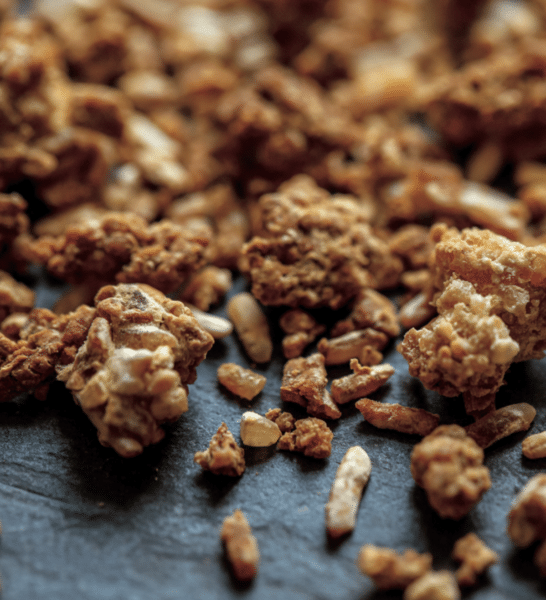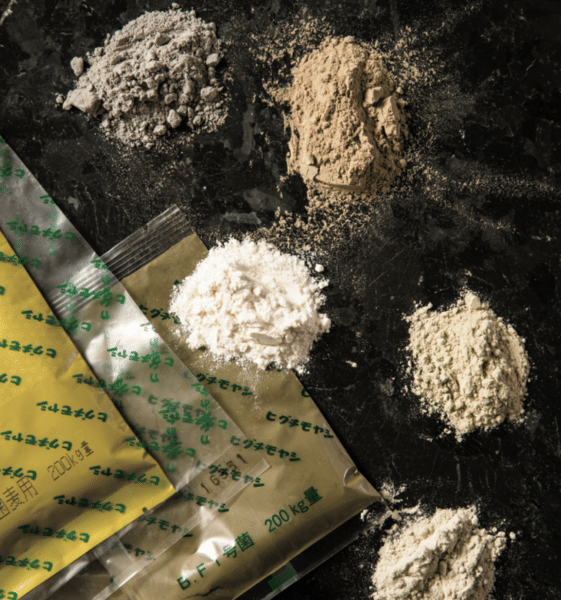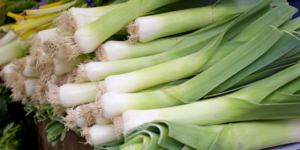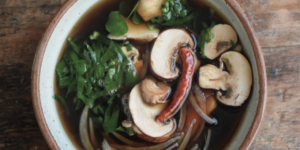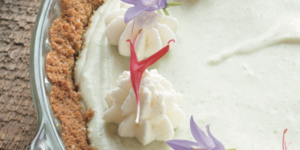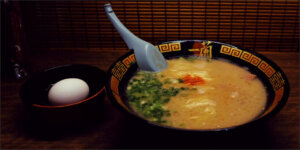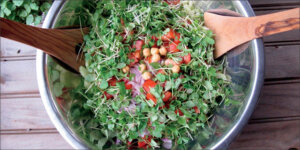Holiday Cookies with a Koji Twist
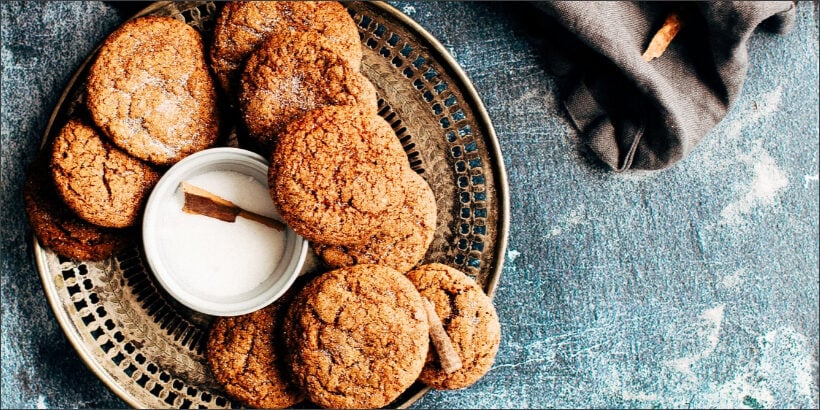
Looking for a twist on a classic cookie? We’ve got you covered!
Chef Markow uses the sweetness and caramelization of koji to add a whole new palette of flavors to a well-loved, traditional cookie: the snickerdoodle. You can go ahead and add this to your holiday cookie list.
Want to know how to grow koji in your own kitchen? Check out this post!
The following recipe is an excerpt from Koji Alchemy by Rich Shih and Jeremy Umansky. It has been adapted for the web.
Chef Anna Markow uses koji not only in desserts such as sorbet (see post “Koji for a Touch of Sweetness: Koji Sorbet”) but also in baked goods such as snickerdoodle cookies. Koji, however, poses a tougher challenge with these, as its aggressive sweetness can threaten to overshadow other elements on the plate.
The high sugar content makes caramelization a logical next step, but evenly toasting the grains is tricky. Low and slow is the key, resulting in relatively consistently roasted grains with a fully dehydrated texture. An oven set as low as it can go, about 170°F (76°C) degrees, does the job nicely in about twenty-four hours or so, with intermittent stirring to guard against hot spots. It’s a simple matter to grind completely dried roasted koji in a dry blender (or in very small batches in a coffee or spice grinder), and results in a powder that can be used as a sweetener or flour, albeit one with a very high sugar content. Because of the sugar content, it is a good idea to add a small amount of cornstarch or white rice flour to act as an anti-caking agent.
To use the powder as a flour, it’s best to combine it with other flours, substituting no more than 25 percent of the total amount.
The flavor is very strong and will come through even in small amounts. These rice flour snickerdoodles contain 12.5 percent roasted koji powder so as not to compromise the structural integrity of the cookies, and are rolled in the powder instead of the traditional cinnamon-sugar mixture. The powder on the outside caramelizes even further in the oven and adds an irresistible bittersweet quality.
Yields 20 Cookies
Ingredients
- 114 g unsalted butter, room temperature
- 76 g granulated sugar
- 60 g (2) egg yolks
- 5 g vanilla extract
- 174 g white rice flour
- 28 g roasted koji powder, plus more for coating
- 4 g baking powder
- Pinch salt
Procedure
- Preheat oven to 350°F (176°C)
- Line a baking sheet with parchment paper or a nonstick silicone mat (you may bake all of the dough immediately or keep refrigerated in an airtight container for 2-3 days)
- Beat butter and sugar in a hand or stand mixer with the paddle attachment until uniformly fluffy
- Beat egg yolks one at a time, scraping sides after each yoke. Then beat in vanilla extract
- In a separate bowl, whisk the remaining ingredients
- Add whisked ingredients to mixer and mix on medium-low until combined
- Drop dough by teaspoonfuls into a bowl of roasted koji powder and toss gently to coat
- Arrange dough balls on the baking sheet in a staggered pattern, leaving 1-2 inches (2.5-5 cm) in-between them
- Bake for about 15 minutes, rotating the sheet as needed for an even coloring, until the outside edges of the cookies are firm and the koji powder has fully darkened and caramelized
Recommended Reads
Recent Articles
How did the modern leek become what it is today? On his quest to save our heritage produce, Adam Alexander unveils the complex history behind leeks and many other vegetables.
Read MoreSoup Lovers Rejoice! Ditch the ordinary chicken noodle and tomato bisque. We’re shaking things up with game-changing soups and a secret ingredient… Vinegar! Ready to level up your soup game?
Read MoreIntroducing our show-stopping spruce tip key lime pie. Spruce up your next gathering with our easy & impressive spruce tip key lime pie. Simple yet delicious!
Read MoreWarm up with a bowl of soul-healing miso soup! Not only delicious, but also packed with amazing health benefits. Add your own twist to this humble base.
Read MoreDoes the cold weather have you dreaming about fresh greens and colorful salad? Tired of waiting for spring to enjoy fresh greens? Grow and harvest sprouts indoors to make those dreams a reality!
Read More

